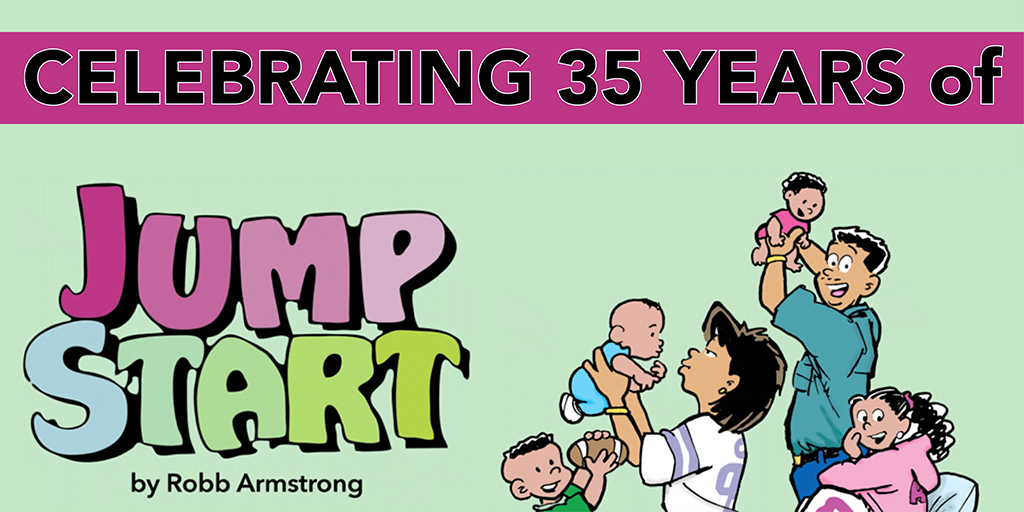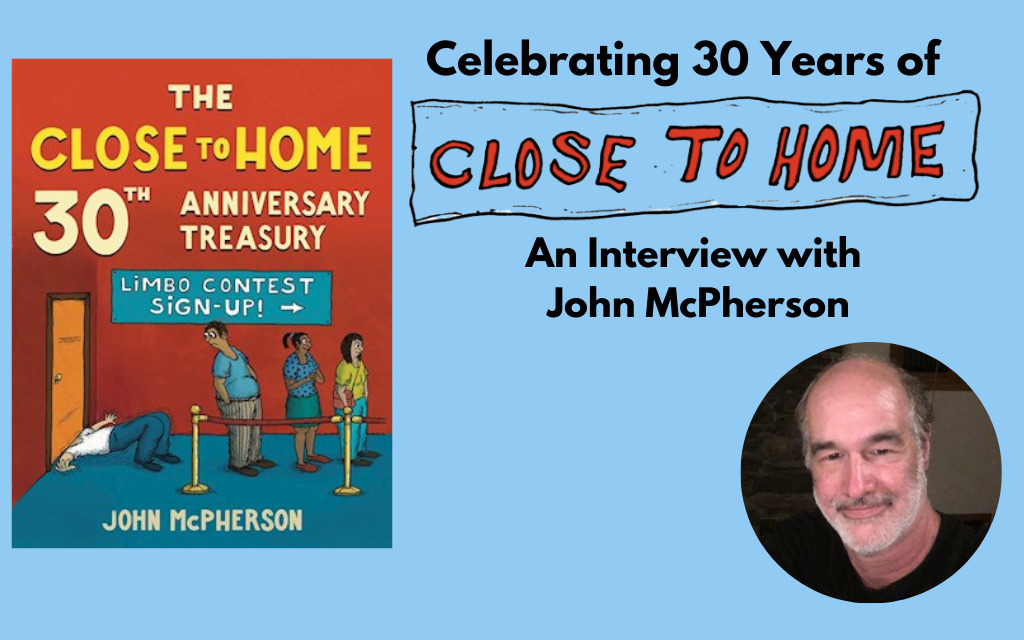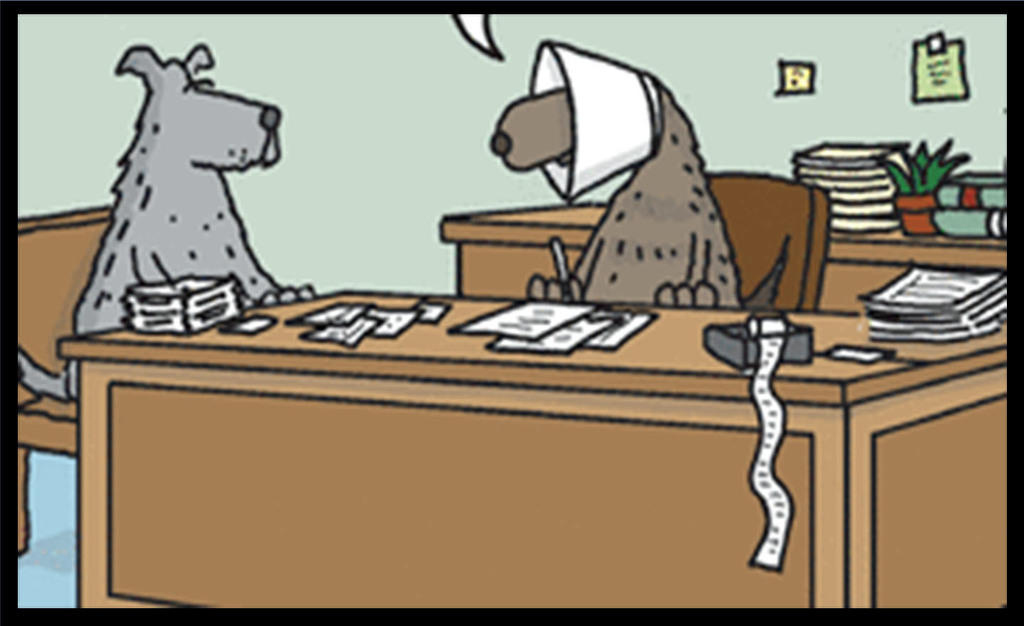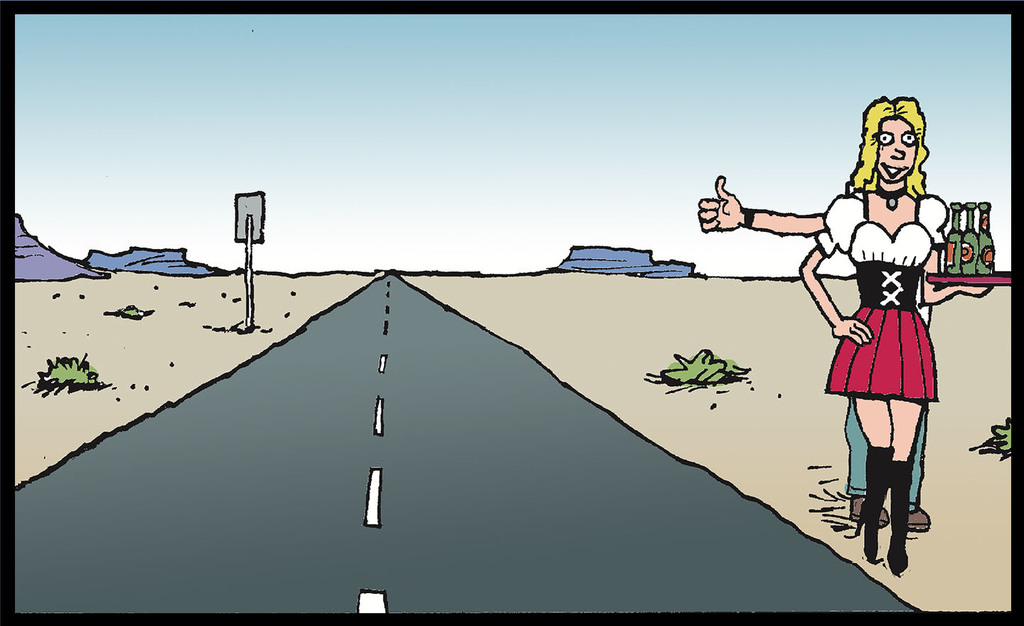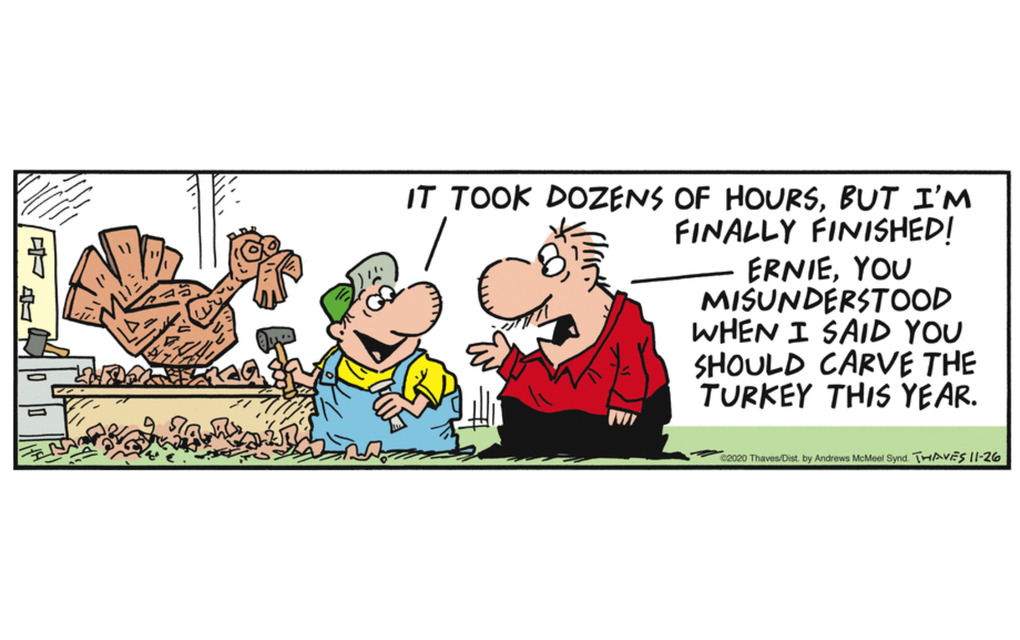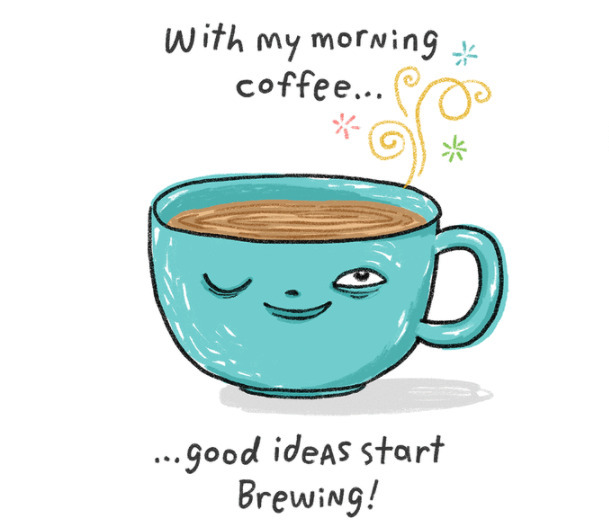Lynn Johnston (For Better or For Worse)
by GoComicsI don't think anyone begins a career as a cartoonist. As one possible moneymaking option drifts into another, you simply fall into it. A cartoonist is "that way" from birth. A cartoonist is in training for a lifetime; watching cartoons, appreciating the antics of expressive, story-telling relatives, and trying anything that will get laughs. A cartoonist is an entertainer. More often than not, cartoonists' childhood behavior is considered annoying and irritating, but it is here, amidst family, teachers and friends, that funny stuff is tried, tested, reworked, polished and honed. "Class Clown" is a compliment. A teacher won't demean a cartoonist in the bud with admonishments like, "You'll never make a living by telling jokes, my friend! ... Do you think you're funny?" The answer to this is, "Yes, I think I could make a living telling jokes ".... because, I am funny!" It's in the blood. It's in the mind, and in the heart - it's unmanageable for the longest time.
Young cartoonists get into all kinds of trouble for simply doing what they are genetically designed to do. Daydreaming, for example, is a large part of comedy. It's a large part of being an artist as well. So if you combine the ability to draw with the ability to create comedy, your daydreaming needs are formidable. Most adults misunderstand daydreaming - they think it's a waste of time. Trouble stalks the young cartoonist in the form of slapstick: A prattfall has to be practiced. A tomato has to be thrown. A belch has to be perfected, and despite the banal (good word here) expulsion of a fart, this, too, can be funny if done right and on cue. It all takes practice. A cartoonist is "on record" from the moment he (I'll say HE just to simplify the text) gets his first good review; "Honey, look what junior's doing! Isn't that FUNNY?!" From then on, the drug has been ingested and the craving begins.
It is true. Laughter is a drug. I have been high on laughs generated while giving a talk on stage. Audience laughter is not just a gratifying "YES," it's part of a symphony the comedian conducts, and when it works, it's heaven. When it doesn't? Well, I, too, have lain awake in bed repeating the mantra, "Why did I do that? What was I thinking? I STANK! I was terrible! Why, oh why did I do that?!" And after a television interview that sucked, I'd pray to the gods of electronic media (they exist) to please erase that tape! "Please let something ruin that piece of my life; don't let it be seen by anyone!" Comedy is Heaven and Hell, and we are willing to taste the brimstone just for that one night when the laughs are genuine, the shtick works, and you come off that stage feeling like you own the planet!
A cartoonist is an entertainer, but not all of us are willing to be skewered on stage. For those of us whose humour rumbles to the surface only on paper (or with friends at a bar), the art of funny can be perfected well before it reaches an audience. I love paper. I love the feel of it; the sound of a good "B" lead pencil gliding around on it, the bite of a flexible nib pen flowing with good quality opaque black ink being drawn into it. Paper is the testing ground, the practice round, and the stage. Paper absorbs, reflects, lays bare and forgives your comedy. You can erase your mistakes on paper. A bomb is detected well before anyone else knows that you're, well "... fallible. Paper is safe, and when you want it to be, it's permanent. Having tried the stage first as a folk-singer and later as a stand-up comedian, I, too, drifted back to the medium I love and trust: paper. This is the stuff into which I can pour my soul.
I was first inspired to draw funny pictures when I was in elementary school. My brother (two years my junior) and I shared a room. With television still an unaffordable miracle, we had to entertain each other. Alan loved to laugh, and when I drew cartoons of people with enormous mouths, eyes and nostrils, he would laugh till he cried. The drug was then well into my veins. Later in grade three, I think, I was asked to make place cards for 10 teachers who were attending a lunch meeting. I drew something to represent each teacher's position. The only one I can remember is the music teacher's card, which showed a round stool in front of a piano - the stool had been unwound so the seat was many feet above the keyboard. I doubt this was an original idea. I was reading books before I was in grade one, and my dad's collection of cartoon books migrated into my room as soon as he'd read them. I particularly liked the work of Len Norris, political cartoonist for the Vancouver Sun, and Virgil Partch, whose military and "drinking" cartoons were, in my mother's opinion, "Not suitable." These and others became my guides to "How to Draw Cartoons" long before there were folks who actually produced teaching aids for kids like me.
My drawings went from outright copying, to stylized look-alikes, to something I could call my own, but it took years. What helped most to distill my own personal style was working for others. I had begun what I thought would be my lifelong career as an animator at Canawest Films in Vancouver, but marriage and then a move to Ontario changed that. My next big opportunity came via McMaster University Medical Centre in Hamilton, where I was hired to do medical drawings: charts, graphs, text-filled slides, serious surgical illustrations, and eventually, cartoons! This was a wonderful job and it introduced me to people who generously opened many doors.
When I was pregnant with my first child, I left McMaster and started a small freelance graphic design studio - this is where my real challenge began. A graphic artist draws realistic things, which can be easily understood by everyone. This is why we go into advertising; this is why we are hired to do those fold-out escape plans you find "in the seat pocket in front of you." I took on everything from billboards to cereal box packaging, which was a world away from cartoons and medical charts. This kind of drawing introduced me to the kind of people who don't know what they want until they see what they don't want. Meaning "... you've gotta show them at least four complete designs before they have the slightest idea what they're looking for. In a way, this too was a performance; I was taking someone else's ideas, trying to make sense of them, turning them into pictures, and then showing them what they had in mind. I managed to do well and to grow what is often a truly maddening business. Some clients want so badly to find fault, to have an opinion when none is required. This is how I discovered a sweet trick-of-the-trade: I began to make mistakes on purpose. One wonderful example was a billboard I had to do extolling the virtues of Saskatchewan: a province to live in and love. I did many roughs, created several finished samples, and when the committee finally settled on the final draft, there was still one holdout; that one nagging soul who had to take a negative stand. For this man, I left out the "T" in Saskatchewan. In front of his committee he was finally able to make the big change he was waiting for. He leaped on the error like a fly on a cowpat, made me blush with embarrassment, and signed off on the art. Whenever friends in other agencies complained about a troublesome client, I'd say, "try a spelling mistake!" It worked every time. Working for others taught me to make my work clear, objective and pleasing - even if it didn't please me. If your audience doesn't get what you're doing, it doesn't matter how good you think it is, you have to dump it and try again. I think this is called professionalism, but it hurts!
I had forsaken the funny stuff for a job that paid the bills. Oh, I did the occasional cartoon poster, greeting card or invitation, and I submitted single-panel gags to the local paper, but I'd left the silliness behind. It was due to my first pregnancy, and the encouragement of friends, that a small book of cartoons called "David, We're Pregnant!" was published. This series of cartoons was done as a gift to my obstetrician, who put them on the ceiling above his examining tables. The book was the right thing at the right time. There was nothing similar out there. It appealed to a lot of people. They laughed, asked for more, and the drug kicked in again.
It's a long story. I've told it before, so I won't ramble through it again. Briefly: "David, We're Pregnant!" was followed by two other cartoon books, which wound up in the hands of Jim Andrews at Universal Press Syndicate. He saw potential in my work and offered me a contract, which I signed well before I knew if I'd be able to fulfill my obligation to him and to my editor - who then had the challenge of bringing me up to speed.
The comic strip For Better or For Worse began in 1979 in a basement studio in Lynn Lake, Manitoba. I was married again, had two kids now, and was writing about my life - or life as I saw it through the eyes of someone like me. It was a job that was to tax every talent, every skill I had, and I did it for thirty years. FBorFW appeared in over two thousand newspapers worldwide, and continues to run again in almost as many markets. It's something of which I am immensely proud, and I continue to be grateful to everyone who encouraged and saw potential in me.
After creating a saga that followed a fictional family through births, deaths, and all the adventures of growing older, one might think that retirement would have been difficult, but it was time. I ended the strip when the story had been told to the best of my ability, and I didn't feel I could add any more. My drawing had "improved" until it was too slick, too lifelike. My stories were now a formula; a mix of what hadn't been said, and what should be said. I felt it had lost the comic edge it once had. It was better to end the story while it was still doing well in the polls than to wait until my readers were telling me to hang up my pens, buy a Tilley hat and plant a garden.
I tied up the loose ends of the story as best I could, and for several years I was retired. Divorced as well, and free as a toot in the wind, I travelled with friends, fixed up my garden, did a few paintings and read. I read a lot. From a secondhand bookstore I bought books in bags too big to carry. Those worth keeping, I kept. Duds, I took back and exchanged for more. I still read a lot, and with every book I read, I learned about writing. Like cartooning, writing is something that can't be taught "... you have to experience it, think about it, keep what's valuable, and put the rest back. I never looked at my own books. I never read my work running again in the paper. The past was the past. I just had to figure out what I was going to do next. Maybe I would write. That's still an option!
As I was learning how to live without deadlines, my daughter graduated from the Emily Carr College of Art in Vancouver and came home to Corbeil. (We moved to this lovely rural lakeside town after six years in the wilds of northern Manitoba.) Kate had majored in pottery and electronic sculpture, and was wondering where an artistic career would take her. Like her older brother, Aaron, she has a wicked sense of humour (when the two of them are together, they create for me a sort of comic heaven) - we get along well. Kate arrived home to find me at loose ends, and with her fiancн© newly transferred from B.C. to Ontario, she quickly saw some potential. Katie and Lane married and moved in to a house just around the corner. Now a busy mother of two, she manages my business, which has taken on a whole new guise. It's amazing what can happen when creative minds come together. I knew that classic retirement wasn't going to get me; I just didn't know where to focus the silliness I still had left!
Serendipity, chance, luck -- call it what you will, wonderful opportunities continue to come my way. I once took a white wedding dress and drew cartoons all over it - something to wear to an awards dinner.
This, along with all of the other crazy art I've kept over the years, is now being carefully archived. As a keepsake, Kate decided to take the pattern on the cartoon dress and make it into a repeating design that could actually be applied to fabric. The result was so exciting I did another and another. As we were discovering the fun of making crazy fabric designs, the curator of the Art Gallery of Sudbury, Ontario, approached us and asked if we would consider doing a large show of FBorFW original art. I was asked if I would also allow them to include samples of the work I did beforehand: childhood drawings, some of the ads, some medical stuff - and if I would also show folks what I was doing now. WoooHoooo!!! This was all the incentive I needed to launch into a series of fabric designs, which have become sillier and funnier as I warm up and let go. We don't quite know what to do with these yet. We've made some items: mugs, ties, binders, just to see how they'd look on fabric and plastic. A talented, young clothing designer is making us some patterns, and soon we will see how the cartoon designs will look on pajamas, dresses and children's clothes. For now, what we're doing with the fabric designs is all for fun, and who knows -- perhaps we will find a good use for them.
Meanwhile, we continue to archive my work; we're completing the 2016 calendar, finishing a collection book, and enjoying the added chaos of kids. My grandkids make me laugh out loud. They make me crazy. They make me grateful for every moment I have with them. It's like being back at square one, when my kids were little and I took out my frustration on paper - sending it all to Universal Press Syndicate in the guise of a comic strip.
My granddaughter, Laura, is almost three. Her brother, Ryan, is nearly eight months old. I watch them both closely for the signs; I watch to see what makes them laugh, what holds their attention, and how hard they work to hold ours. I'm waiting for the day when a teacher calls my daughter to say that her kid is the class clown, daydreams, and has a hard time focusing - I'll know that the gene has been passed down. I'll prepare them for the effects of the drug, which compels us to go on stage. I'll tell them about the highs and the lows of despair, followed by raucous elation. The one thing of which I can assure them is, YES! It is possible to be funny for a living - all you need is confidence, opportunity, encouragement"... and be willing to take a few falls. After that, it's hard work, but the rewards are wonderful. This is true ".... and I can prove it!
-- Lynn J.
Read For Better or For Worse here, follow the comic on Facebook and Twitter or visit its website for games, puzzles and more!


